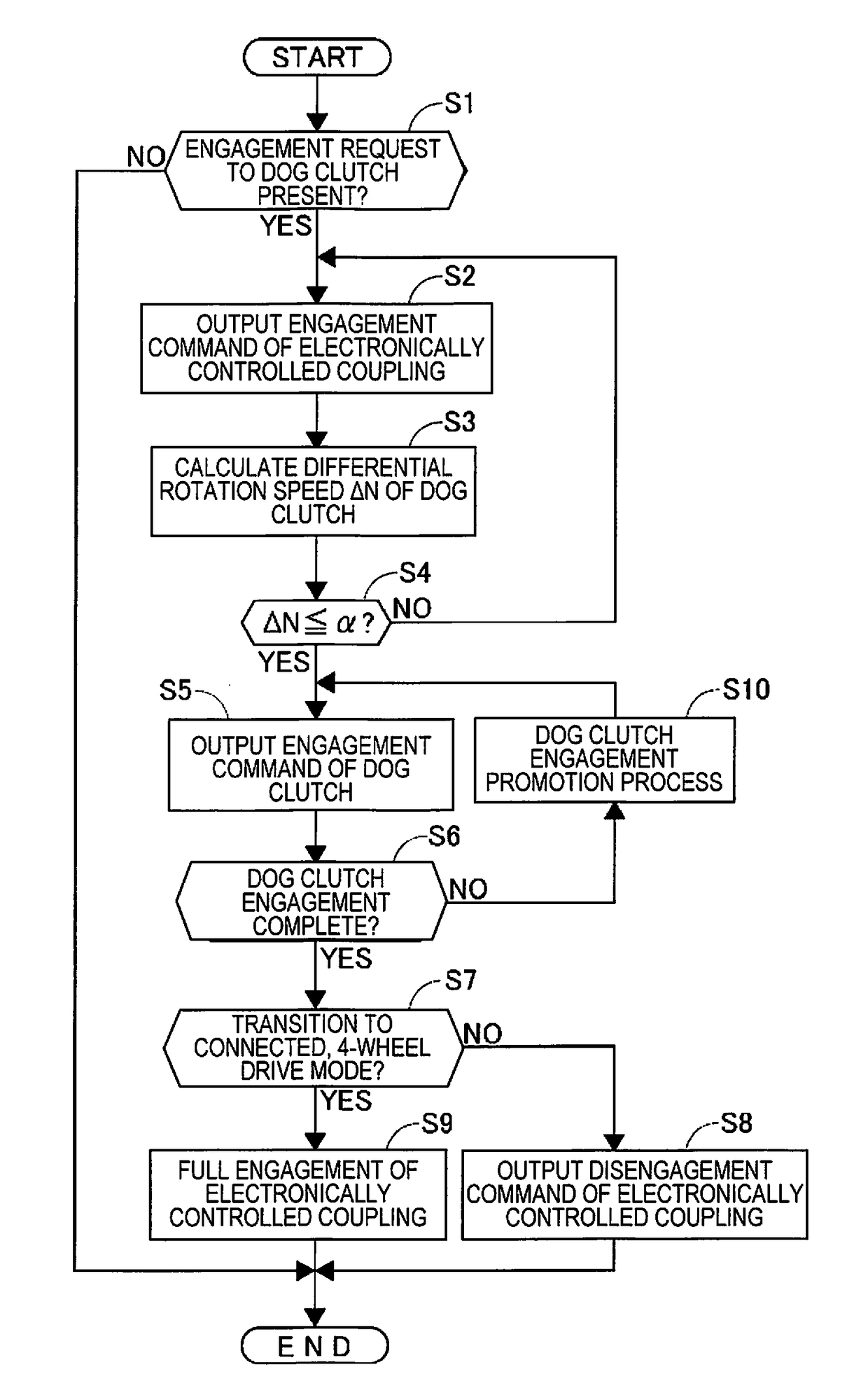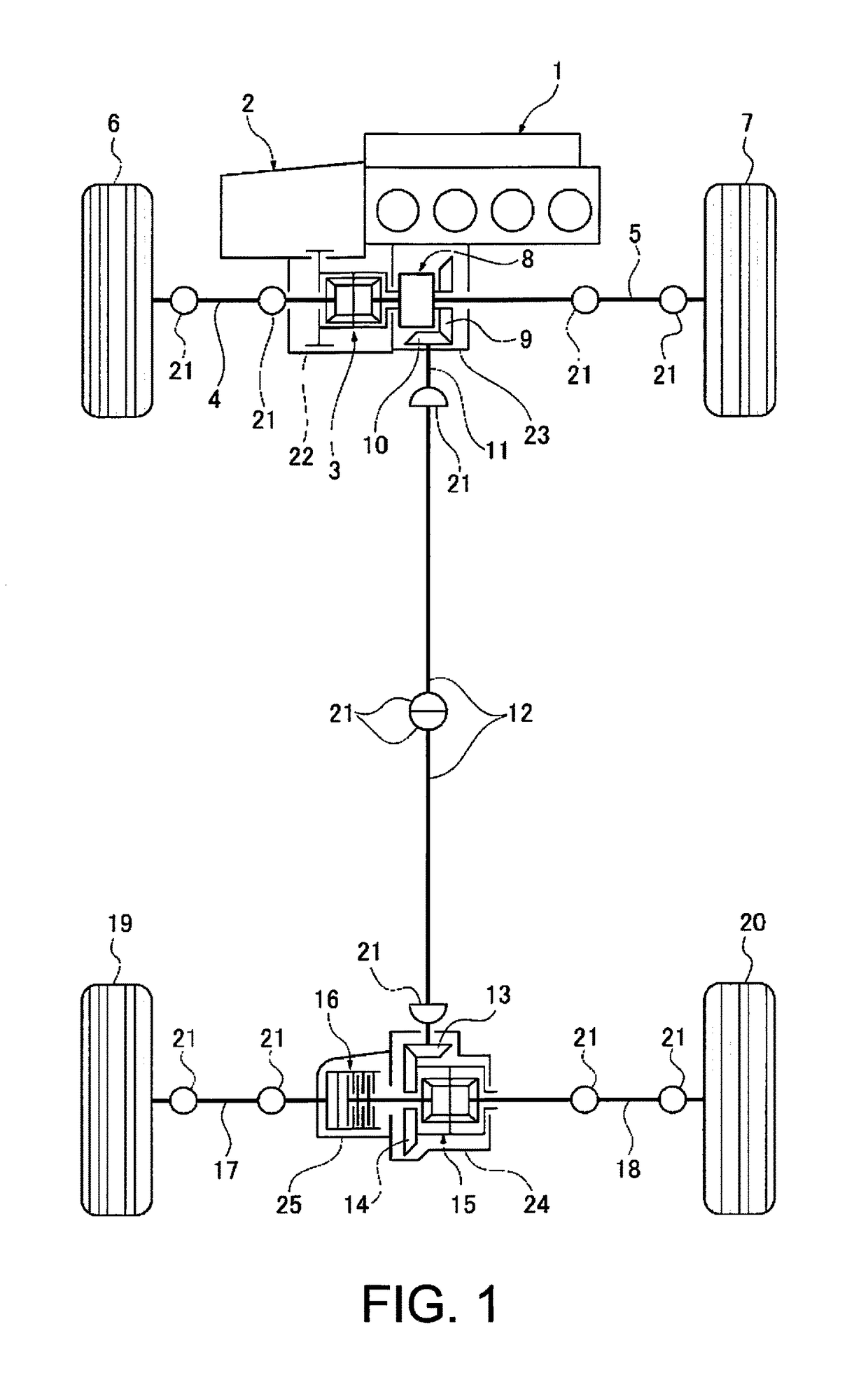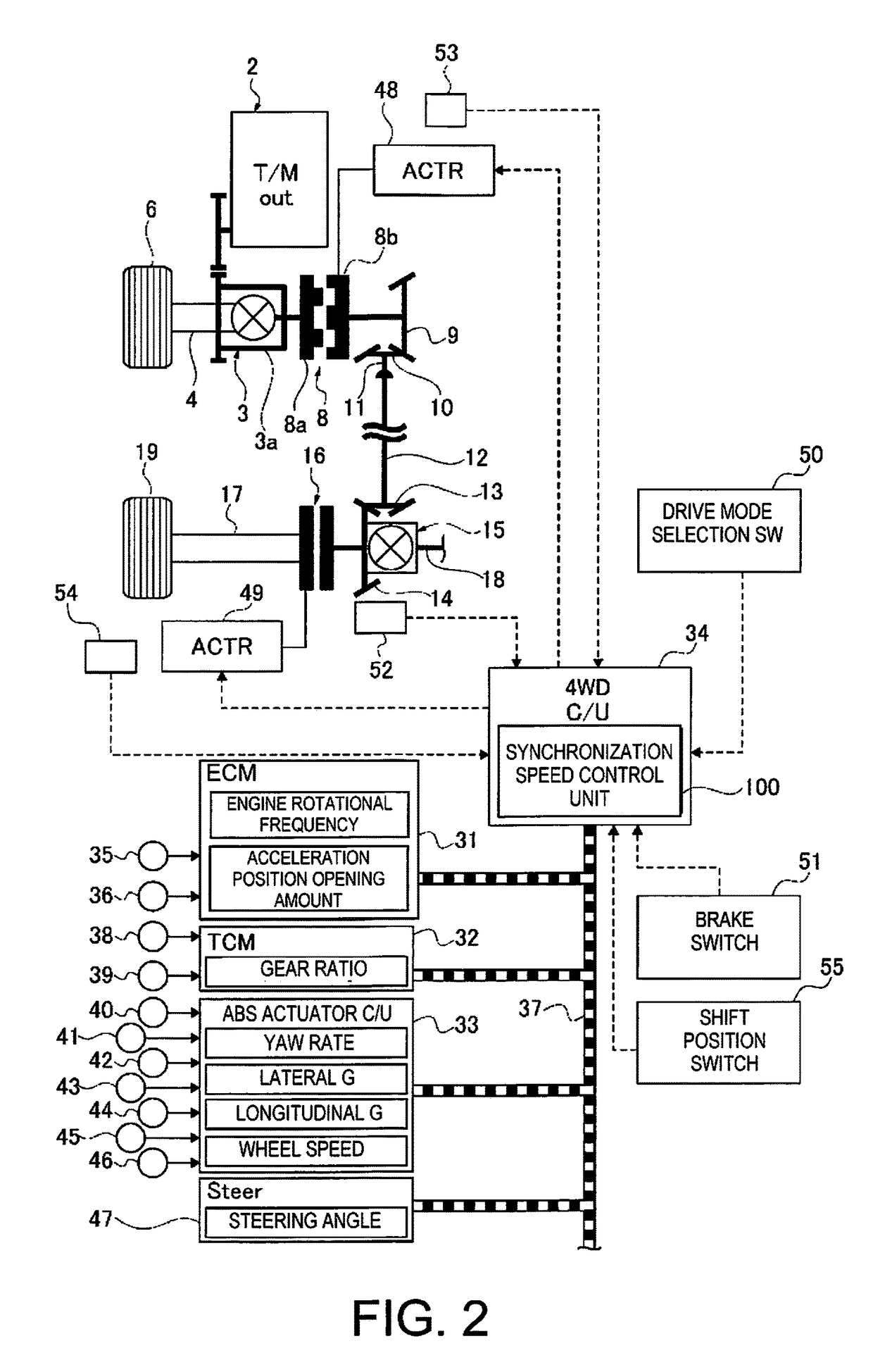Clutch control device for four-wheel drive vehicle
a technology of clutch control device and four-wheel drive vehicle, which is applied in the direction of clutch, control device, vehicle components, etc., can solve the problems of inability to complete the switch to the four-wheel drive mode, inability to obtain sufficient travel stability, and inability to complete the switch. achieve the effect of reducing the transmission torque of the friction clutch, and reducing the distribution of drive force to the auxiliary drive wheels
- Summary
- Abstract
- Description
- Claims
- Application Information
AI Technical Summary
Benefits of technology
Problems solved by technology
Method used
Image
Examples
first embodiment
[0023]Referring initially to FIG. 1, a front wheel drive based four-wheel drive vehicle (one example of a four-wheel drive vehicle) is schematically illustrated with a clutch control device in accordance with a first embodiment.
Drive System Configuration of the Four-Wheel Drive Vehicle
[0024]FIG. 1 illustrates the configuration of the drive system of a front wheel drive based four-wheel drive vehicle to which is applied the clutch control device of the first embodiment. The drive system configuration of the four-wheel drive vehicle will be described below based on FIG. 1.
[0025]The front wheel drive system of the four-wheel drive vehicle is provided with a transverse engine 1 (drive source), a transmission 2, a front differential 3, a left front wheel drive shaft 4, a right front wheel drive shaft 5, a left front wheel 6 (main drive wheel), and a right front wheel 7 (main drive wheel), as illustrated in FIG. 1. That is, the drive force is transmitted from the transverse engine 1 and t...
second embodiment
[0094]The second embodiment is an embodiment in which, when reducing the transmission torque of the electronically controlled coupling 16 in an engagement standby state during deceleration, the reduction is carried out gradually over time. That is, in FIG. 8, when reducing the engagement command output TETS from time t85, the reduction is carried out at a predetermined decrease gradient, as indicated by the dotted line in the drawing. In this case, the decrease gradient may be constant or variable in accordance with the deceleration degree. If variable, the decrease gradient may be made gradual when the deceleration degree is high in order to suppress engagement shock. Or, conversely, the decrease gradient may be made steep in order to increase responsiveness when the deceleration degree is large; the decrease gradient may be appropriately set according to the vehicle characteristics or the set speed of the vehicle speed threshold value VSPst.
[0095]2-1) In the clutch control device ...
third embodiment
[0096]The third embodiment is an embodiment in which, when carrying out a drive mode switch control that releases the dog clutch 8 when an engagement standby state is detected, the release is carried out without releasing the electronically controlled coupling 16 in advance.
[0097]As illustrated in the flowchart of FIG. 9, in S301 to which the process proceeds when an engagement standby state is determined in Step S101, it is determined whether or not to transition to the disconnected two-wheel drive mode in which the dog clutch 8 is released by a transition of the vehicle state. If shifting to the disconnected two-wheel drive mode, the process proceeds to Step S302, and if not shifting to the disconnected two-wheel drive mode, the process proceeds to Step S102 and the same process as in the first embodiment is carried out.
[0098]In Step S302, to which the process proceeds when transitioning to the disconnected two-wheel drive mode, the dog clutch 8 and the electronically controlled c...
PUM
 Login to View More
Login to View More Abstract
Description
Claims
Application Information
 Login to View More
Login to View More - R&D
- Intellectual Property
- Life Sciences
- Materials
- Tech Scout
- Unparalleled Data Quality
- Higher Quality Content
- 60% Fewer Hallucinations
Browse by: Latest US Patents, China's latest patents, Technical Efficacy Thesaurus, Application Domain, Technology Topic, Popular Technical Reports.
© 2025 PatSnap. All rights reserved.Legal|Privacy policy|Modern Slavery Act Transparency Statement|Sitemap|About US| Contact US: help@patsnap.com



